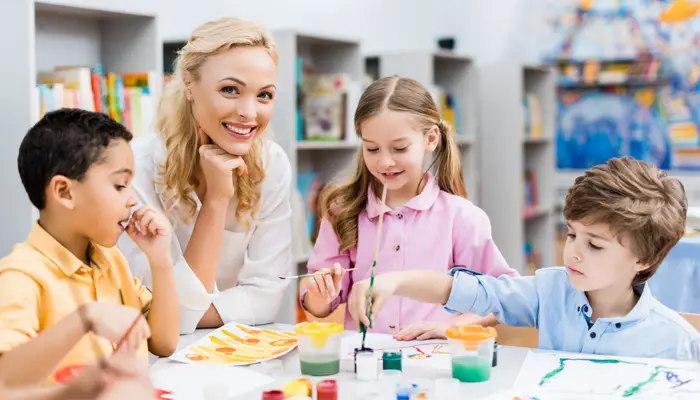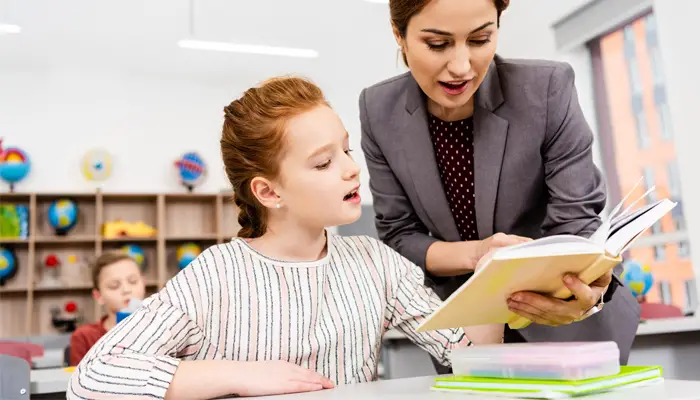If you have an interview for a job in a school, regardless of the position, you should be prepared to answer a few safeguarding in schools interview questions.
These interview questions will be asked to assess your ability to protect students from harm, and your answer should detail the various ways you would safeguard students in your care, as well as how you would respond to any safeguarding concerns that may arise.
Some key things to know before your interview are:
- The different types of abuse
- How to identify children at risk
- How you can protect children at risk
- What you should do if you suspect a child is being abused
- How you can support a child who has been abused
7 Safeguarding in Schools Interview Questions and Answers
1. What do you think are some of the most important things a school can do to prevent abuse or neglect?
Sample Answer: Two of the most important things I think a school can do to prevent abuse or neglect are providing training for all staff so that they are aware of the signs of abuse or neglect, and having clear and concise procedures in place to report and respond to any concerns.
I also believe that it is important to create a culture of openness and transparency in the school so that students feel comfortable coming forward with any concerns they may have.
2. What would you do if you suspected a child was being abused or neglected?
Sample Answer: If I suspected a child was being abused or neglected, I would first attempt to speak with the child privately to see if they felt comfortable sharing any information with me.
If the child did disclose abuse or neglect, I would then report my suspicions to the person in charge of safeguarding at the school.
3. How would you identify a child at risk of abuse or neglect?
Sample Answer: Unfortunately, there is no one definitive way to identify a child at risk of abuse or neglect.
However, there are some common indicators that may suggest a child is at risk, such as sudden changes in behaviour or appearance, withdrawing from friends or activities, or exhibiting signs of fear or anxiety.
4. In just a few words, what is your understanding of safeguarding in schools?
Sample Answer: From my understanding, safeguarding in schools is taking all the necessary precautions to ensure that students are protected from any type of abuse or neglect, whether it is physical, emotional, sexual, or anything else.
5. What are some common signs of abuse or neglect?
Sample Answer: Some common signs of abuse or neglect can include bruises or injuries that are not consistent with the child’s explanation, withdrawal from friends or activities, changes in eating habits, sudden outbursts of anger or hostility, and self-harm are just a few.
6. What do you think are the most important elements of a safeguarding policy?
Sample Answer: I think the most important elements of a safeguarding policy are having clear procedures in place to report and investigate allegations of abuse or neglect, and ensuring that all staff are trained in how to recognise and respond to the signs of abuse and neglect.
7. How would you deal with a situation where a colleague was not following safeguarding procedures?
Sample Answer: If I noticed that a colleague was not following safeguarding procedures, I would first try to talk to them about it and see if there was a reason why they were not following the procedures.
If they could not give a satisfactory explanation, or if I felt like they were deliberately disregarding the procedures, I would then report the matter to the person in charge of safeguarding at the school.
See Also: Safeguarding interview questions for teachers
What is safeguarding in schools?

In a nutshell: Safeguarding in schools refers to the measures taken by school staff, governors and local authorities to protect children from harm.
This includes protecting them from physical, emotional and sexual abuse, as well as neglect. It also covers protecting children from radicalisation and extremism.
Safeguarding in schools is about creating a safe and supportive environment for all children and young people, where they feel valued and can thrive.
This includes ensuring that all staff are trained in safeguarding and are fully aware of the procedures to follow if they think a child might be vulnerable.
Why is safeguarding in schools important?
Safeguarding is important because all children have a right to be safe and protected from harm.
Unfortunately, there are some people who may try to harm children, either physically or emotionally. It is our job to make sure that children are safe, and that they know what to do if they ever feel unsafe.
What is a safeguarding policy in schools?
A safeguarding policy is a document that sets out a school’s commitment to safeguarding and promoting the welfare of children and young people.
It should outline the procedures that staff, governors and volunteers should follow if they have concerns about a child’s welfare.
The policy should also be reviewed regularly and updated in line with changes to legislation, guidance and good practice.
Who is responsible for safeguarding in schools?
The Safeguarding Lead is responsible for safeguarding in schools. This is usually the Headteacher or Designated Safeguarding Lead (DSL).
The DSL has a central role in ensuring that safeguarding procedures are followed and that all staff are trained in safeguarding.
There’s usually a Safeguarding Team responsible for implementing the safeguarding policy and procedures.
The team should usually include the DSL, a Deputy DSL, and other senior staff with responsibility for specific areas of safeguarding (e.g. child protection, e-safety, safeguarding in sports etc).
What is the difference between safeguarding and child protection in schools?
Safeguarding is a broad term that covers all the measures taken to keep children safe from harm.
Child protection is a specific aspect of safeguarding and refers to the procedures that should be followed if there are concerns that a child is being abused or neglected.
What are the signs of abuse and neglect?
The signs of abuse and neglect can be physical, emotional or behavioural. They can also vary depending on the age of the child.
Some common signs of abuse and neglect include:
- Physical signs: unexplained bruises, marks or injuries; frequent illnesses or accidents; sudden changes in behaviour or appearance.
- Emotional signs: withdrawn or aggressive behaviour; excessive clinginess; bedwetting; changes in eating habits.
- Behavioural signs: truanting; self-harming; using drugs or alcohol; unexplained gifts or money.
See Also: Safeguarding interview questions for teaching assistants
How can schools safeguard children?
Schools can safeguard children by ensuring that all staff, governors and volunteers are trained in safeguarding and know what to do if they have concerns about a child’s welfare.
They should also have policies and procedures in place to support safeguarding, and make sure that these are followed.







Leave a Comment